Timber siding has been a favourite covering for houses over centuries. Similar in applications to other cladding materials, like metal or brick, wood is nevertheless drastically different, for it once was a living thing. Cedar boards and shingles will age beautifully with years, taking on an elegant gray patina, obtaining nicks and scratches, and architects use them to create a pleasing harmony with a surrounding landscape.
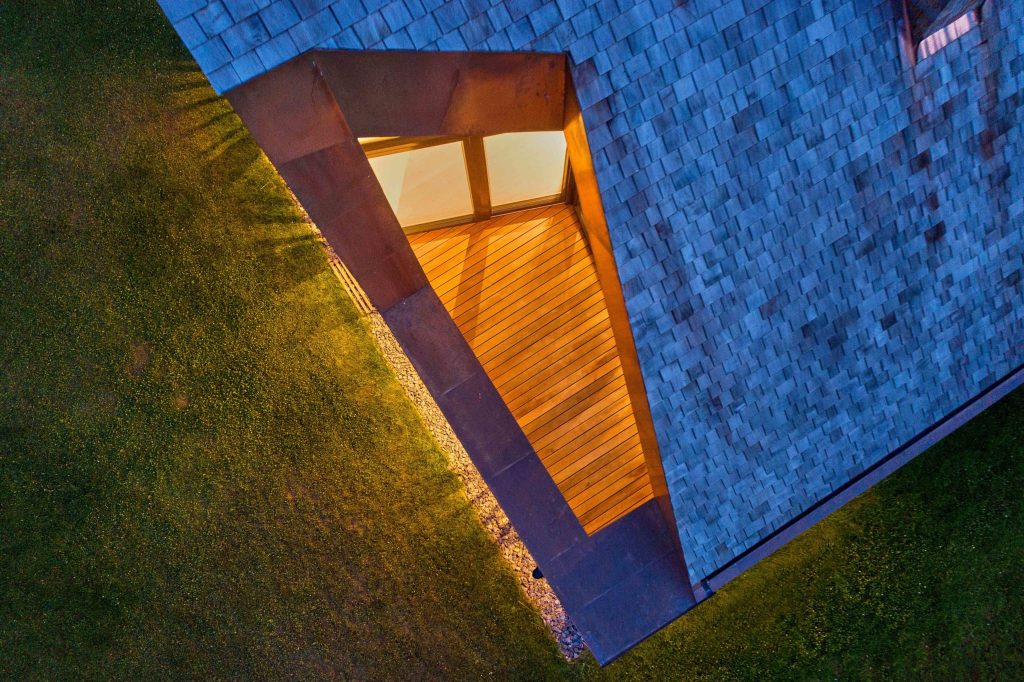
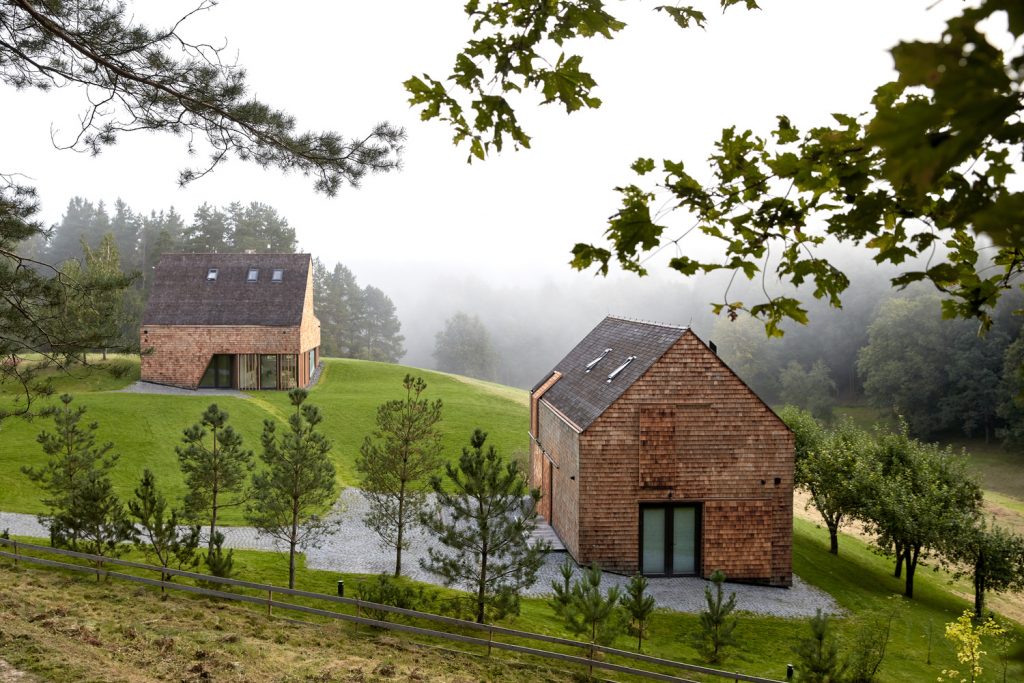
Kedronamai (Cedar House) by Arches (also header image)
Lithuanian studio Arches has used cedar cladding among other exclusively natural, sustainable materials for the renovation of a former homestead. The residence comprises two volumes – the main residence and the storehouse – connected by a stone rubble pavement. The frames of the two buildings are made from pine wood and wrapped in cedar shingles, from which the project takes its name.
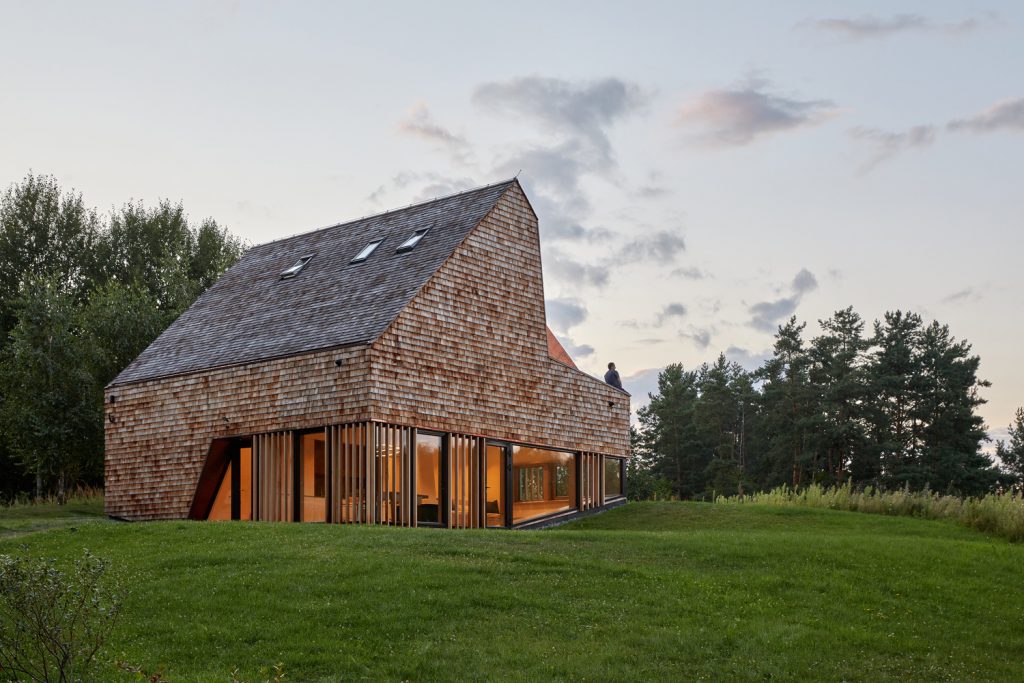
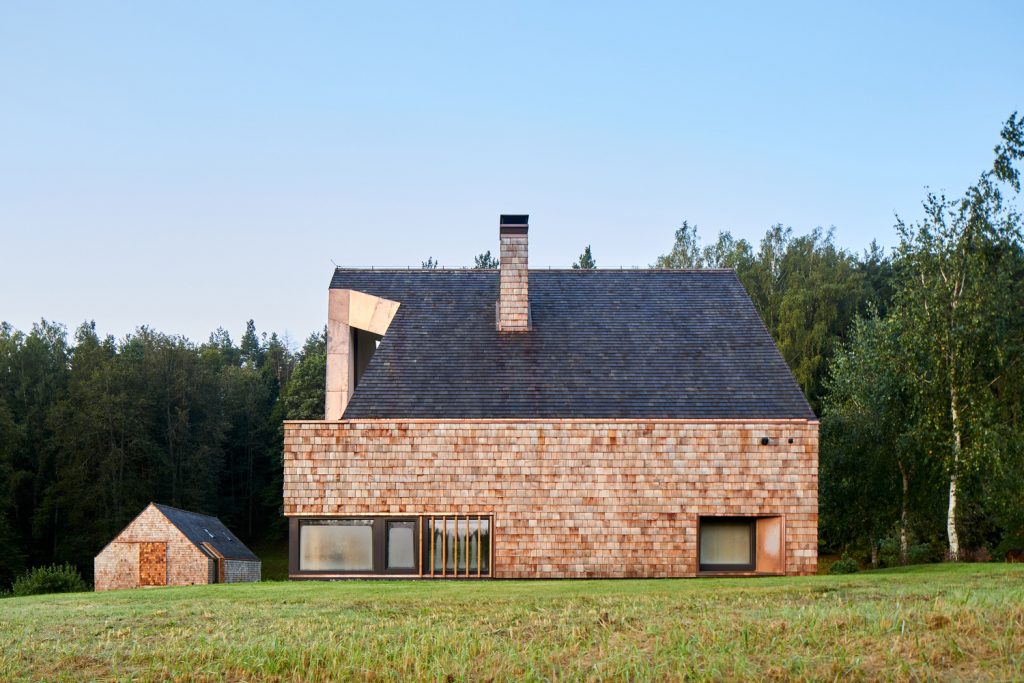
Kedronamai (Cedar House) by Arches
The cedar cladding has allowed the architects to integrate Cedar House into the landscape without any need to dominate the environment but rather inviting the occupants “to experience, to see, to hear, to touch, to smell” the nature. Apart from their esthetic qualities, the four layers of cedar shingles, traditional and extremely durable cladding, provide reliable protection from the elements.
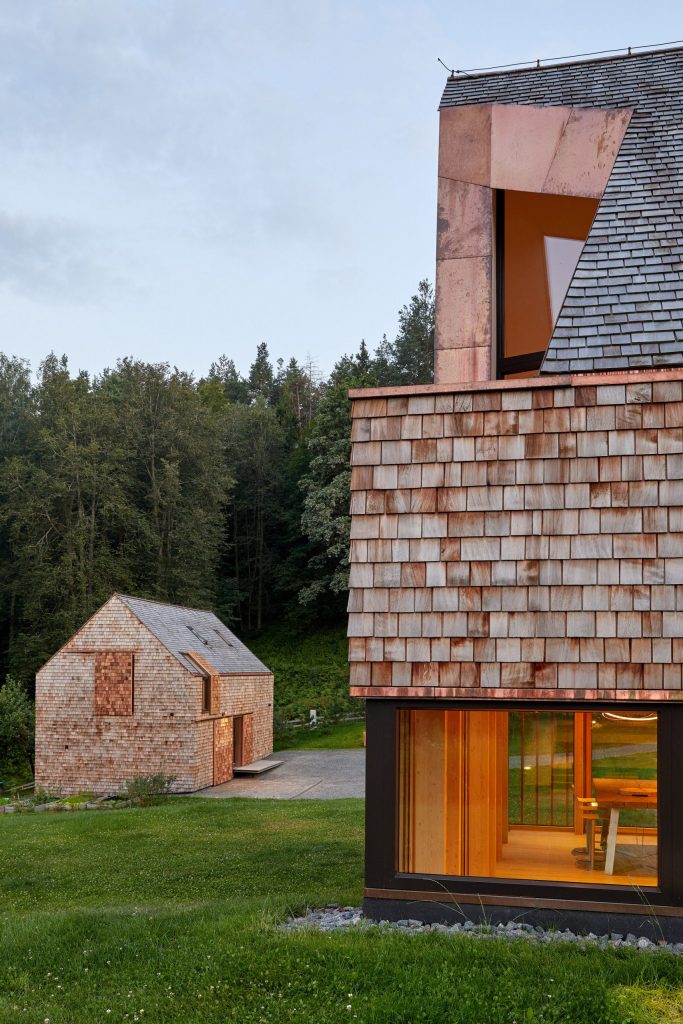
Kedronamai (Cedar House) by Arches
The material palette for Cedar House includes ecological and locally sourced materials, such as copper tin for window opening and entrance details, wood wool for insulation of the walls and roof, and natural clay plaster for interior finishes. Inside, the design programme is kept minimalist: subtle contemporary furnishings against white walls and unfinished wood.
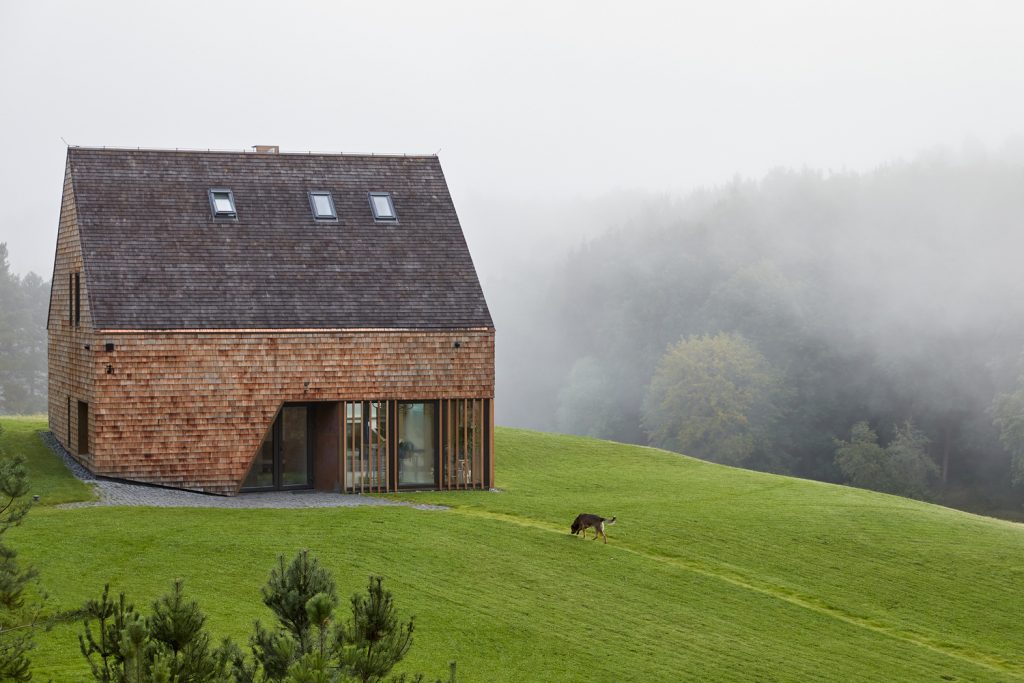
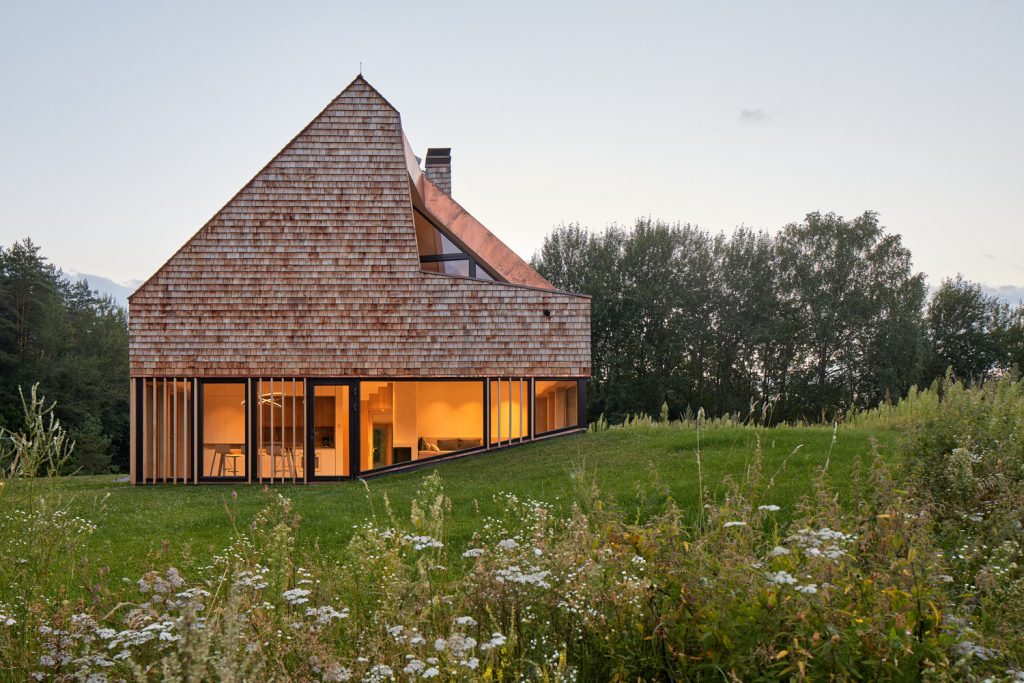
Aiming to retain a traditional architectural silhouette, the architects have nevertheless added a contemporary feel to the structure of the main house. They have created a negative space cut in its upper volume to accommodate a terrace and fitted the lower half with glass windows and doors. The glazings of the storehouse are hidden behind sliding cedar-clad window and door frames for a more restrained look.
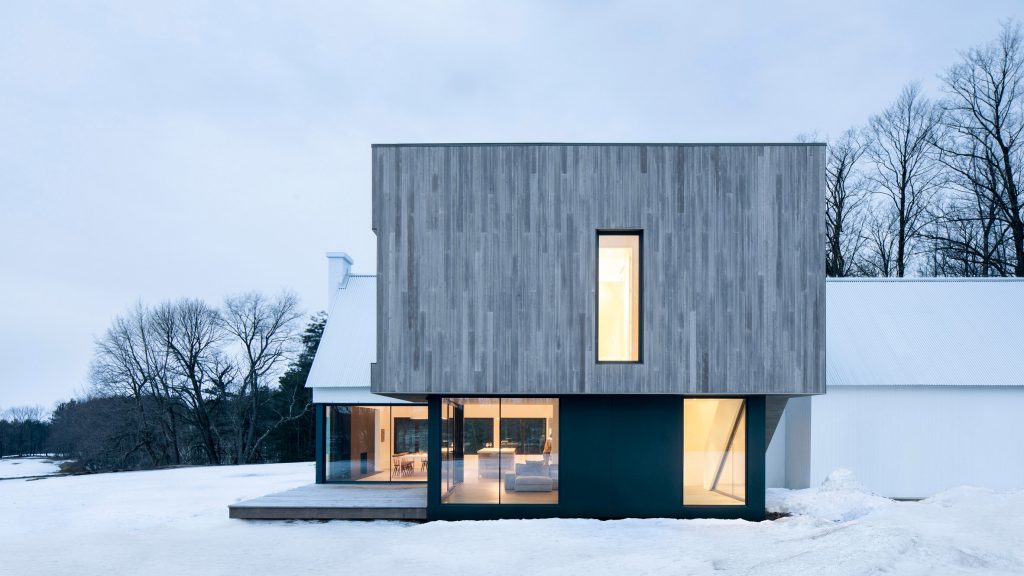
Knowlton Residence by Thomas Balaban Architect
Thomas Balaban Architect has updated an aging country farmhouse in a popular ski destination in Quebec, Canada, in response to the client’s desire to enlarge and covert it into their primary residence. The gable-roofed structure of Knowlton Residence has been completely renovated with a new two-storey extension built upon the foundations of a previous addition. Going up instead of spreading out allowed for more space and better views without the need to excavate across the hilltop.
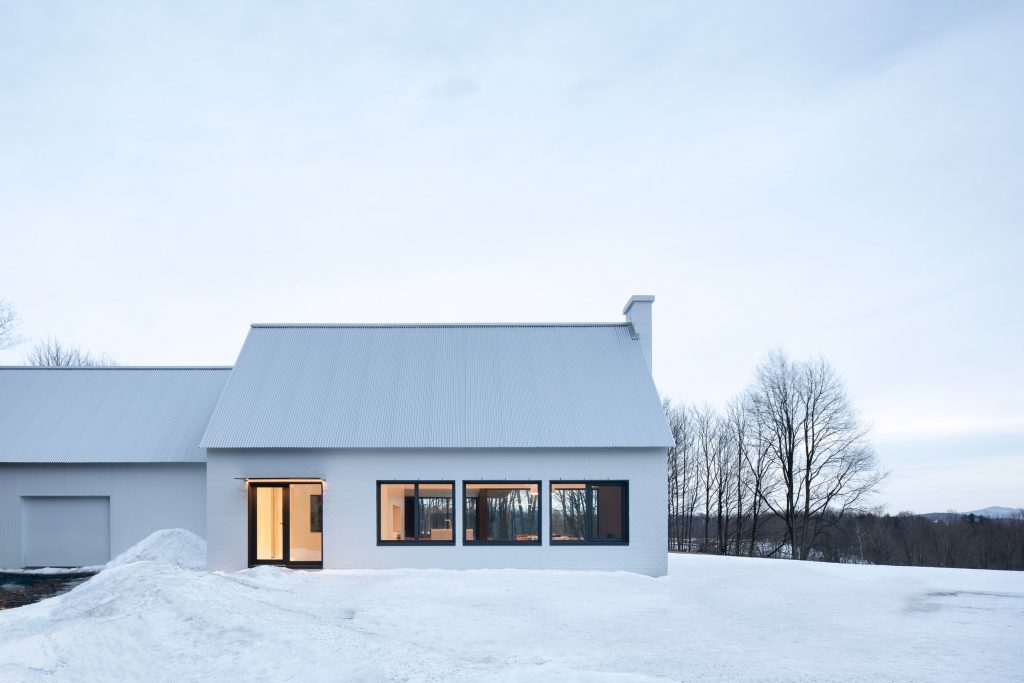
Knowlton Residence by Thomas Balaban Architect
The old barns and agricultural sheds that are abundant in the area influenced TBA’s choices for the exterior treatment of both structures. While the main structure is clad in contemporary materials and rendered white, the extension has obtained a more traditional appearance by the use of cedar boarding, charred and silvered to replicate weathered wood.
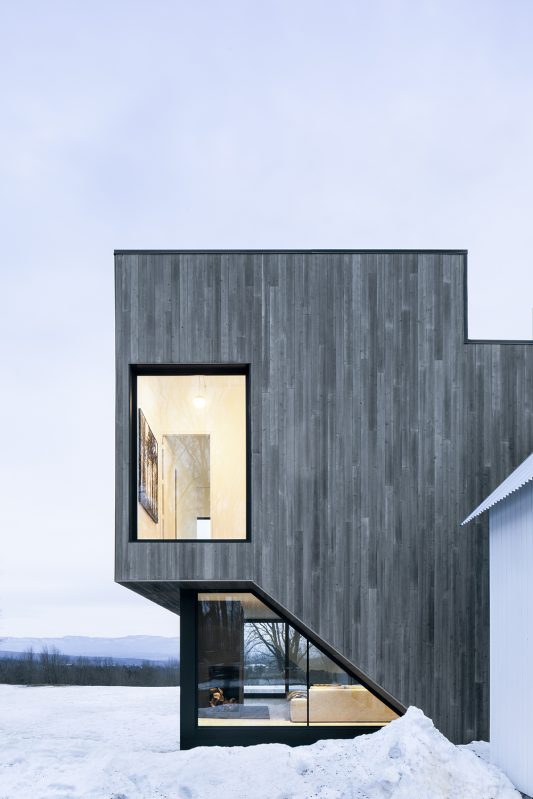
Knowlton Residence by Thomas Balaban Architect
The box-shaped extension plays off the familiar farmhouse typology, creating a series of intriguing contrasts between simple forms and vernacular materials. The detailing remains modern and minimalist.
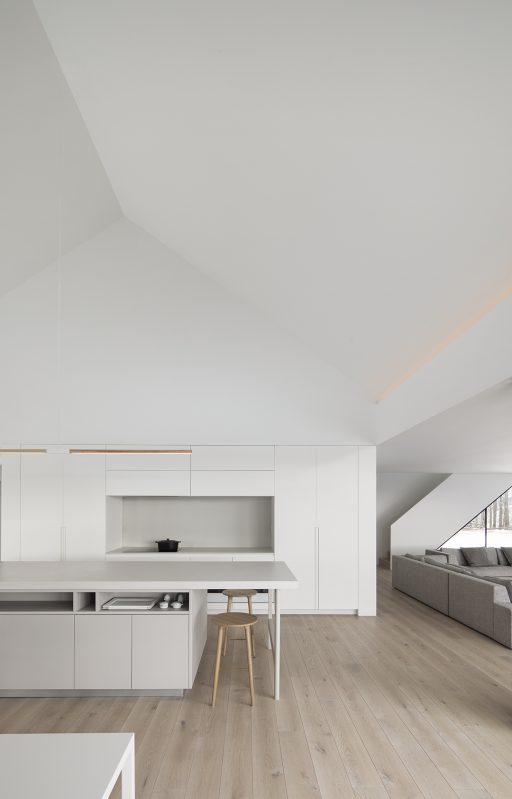
Knowlton Residence by Thomas Balaban Architect
Inside, the roof’s pitch is left exposed allowing for high ceilings in the family’s open-plan kitchen and dining room. This area connects to the sitting room located in the extension, the two volumes being connected by sliding doors that open from either room onto a terrace.
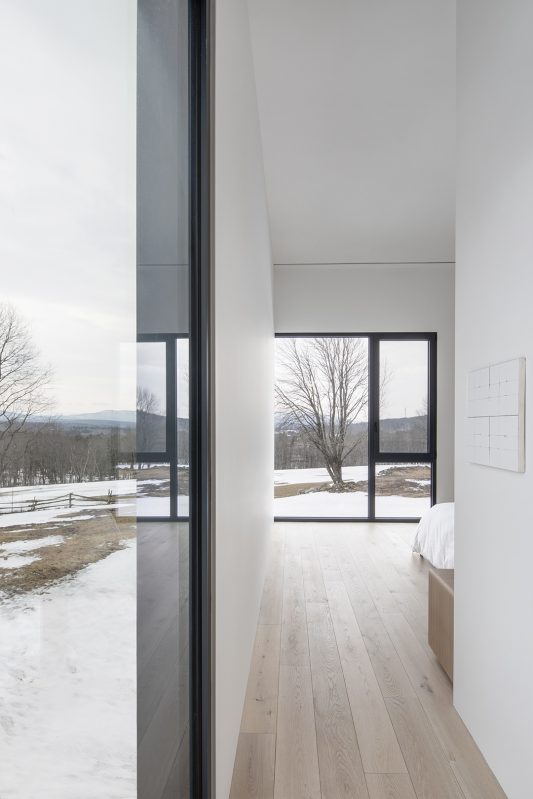
Knowlton Residence by Thomas Balaban Architect
The architects have opted for minimal finishes throughout the home. Most walls are left bare white contrasting to the thick black window frames and matching accent walls. This monochrome palette creates a great background for the owner’s Scandinavian-inspired wooden furniture.
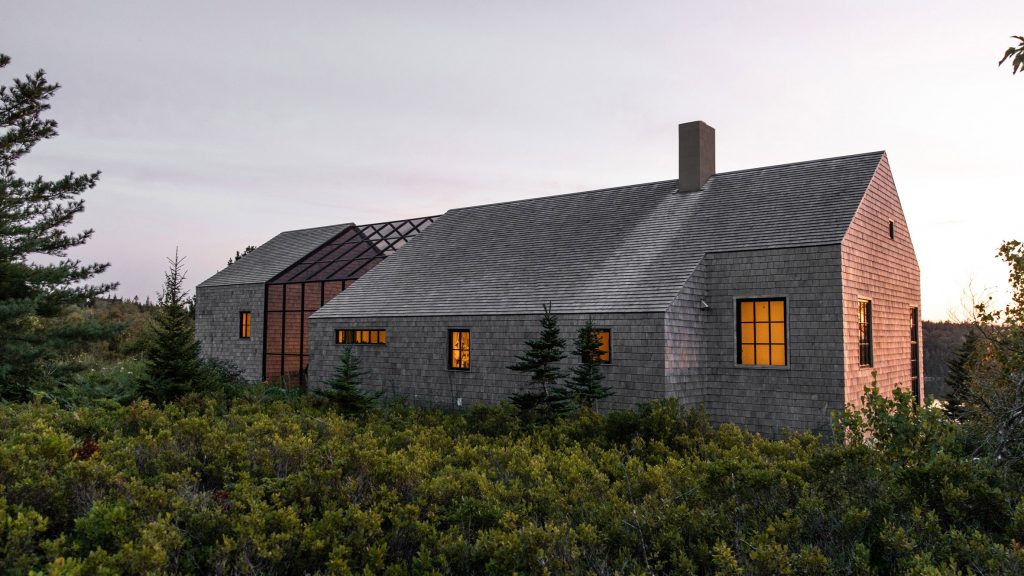
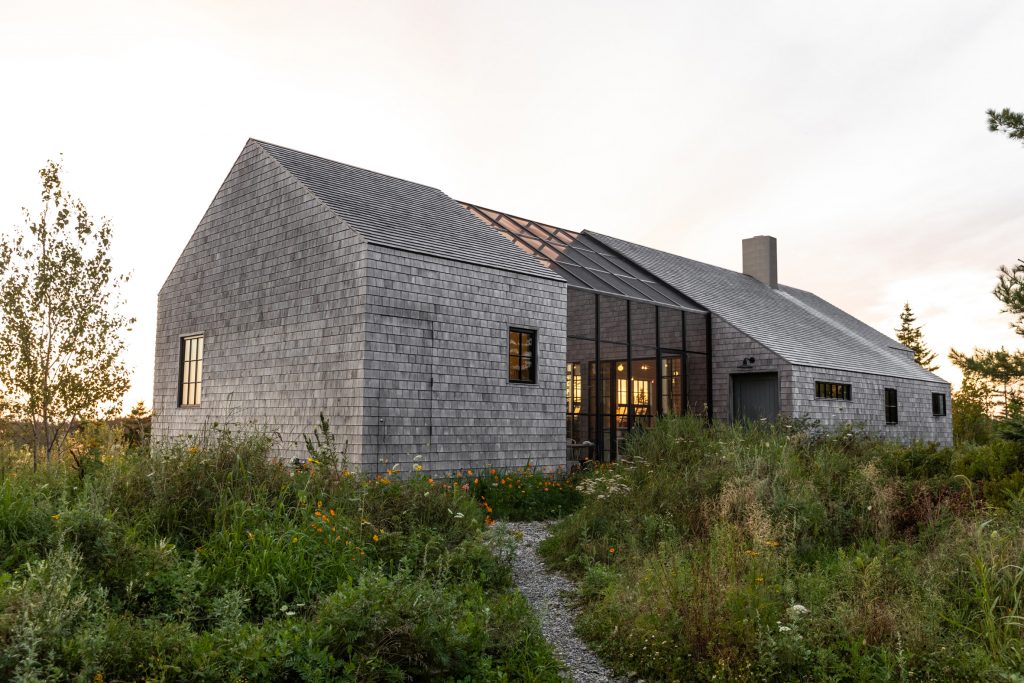
Little Peek by Berman Horn Studio
Maria Berman and Brad Horn, who run Berman Horn Studio in New York, have built themselves a holiday home in Vinalhaven, an island off the coast of Maine. The residence, titled Little Peek, is composed of three volumes forming a single gabled-roof structure.
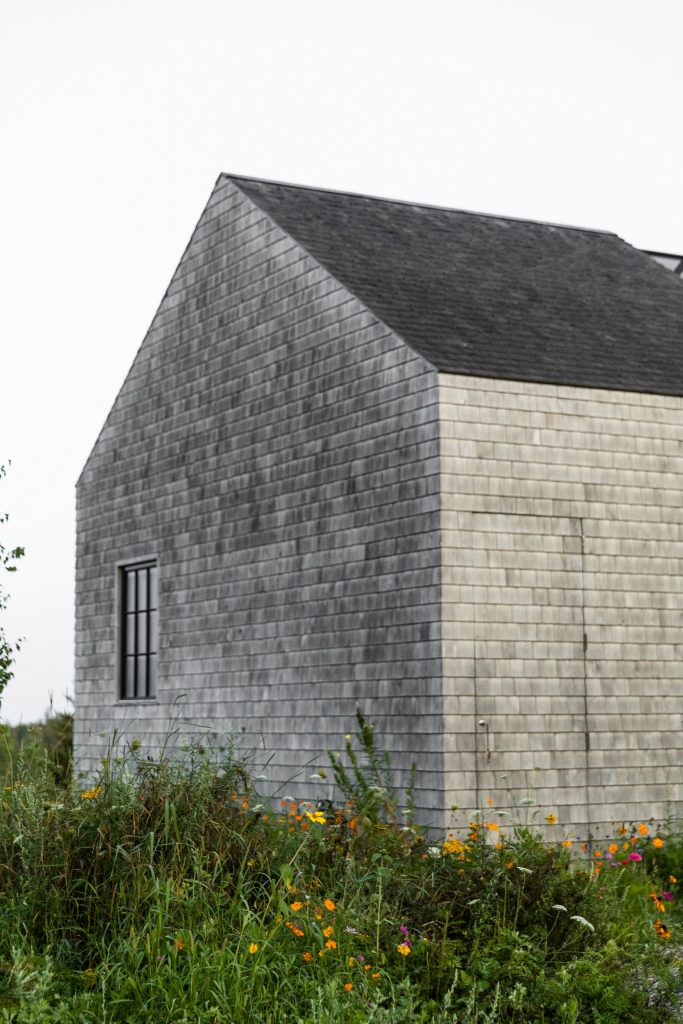
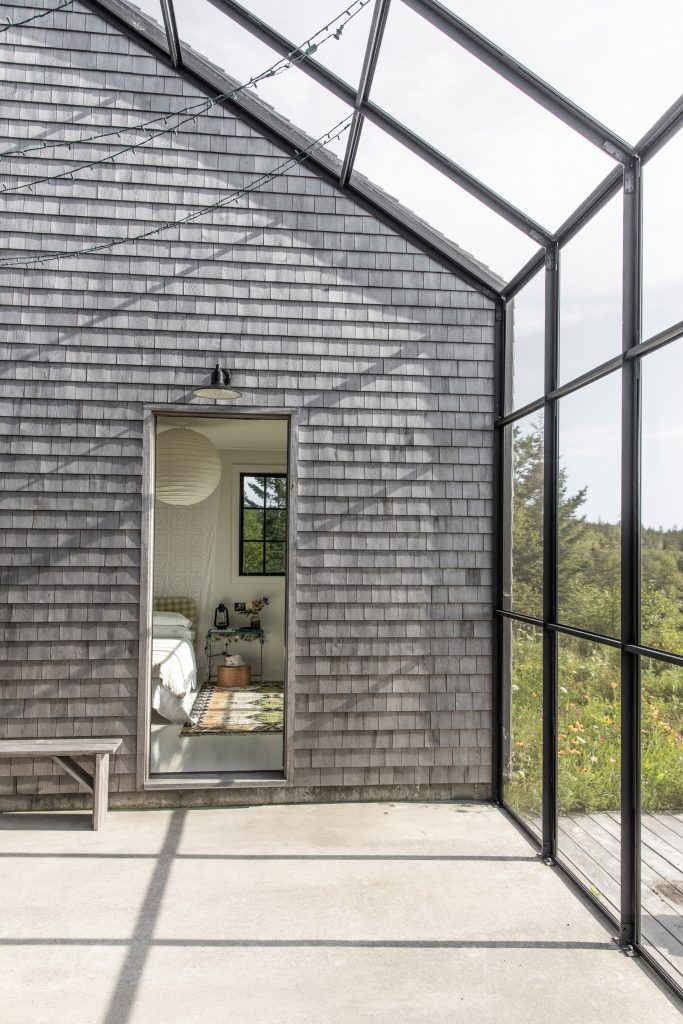
Little Peek by Berman Horn Studio
All the exterior surfaces of the larger main house and a smaller guest cottage are covered with white cedar shingles with a silvery hue, including the roof and doors, for a uniform look. Between the two volumes, there is a screened patio, which creates a shared exterior room and extends the profile of the roofline to tie the two houses together. A door from the enclosed porch provides access to a deck with folding chairs for sunbathing.
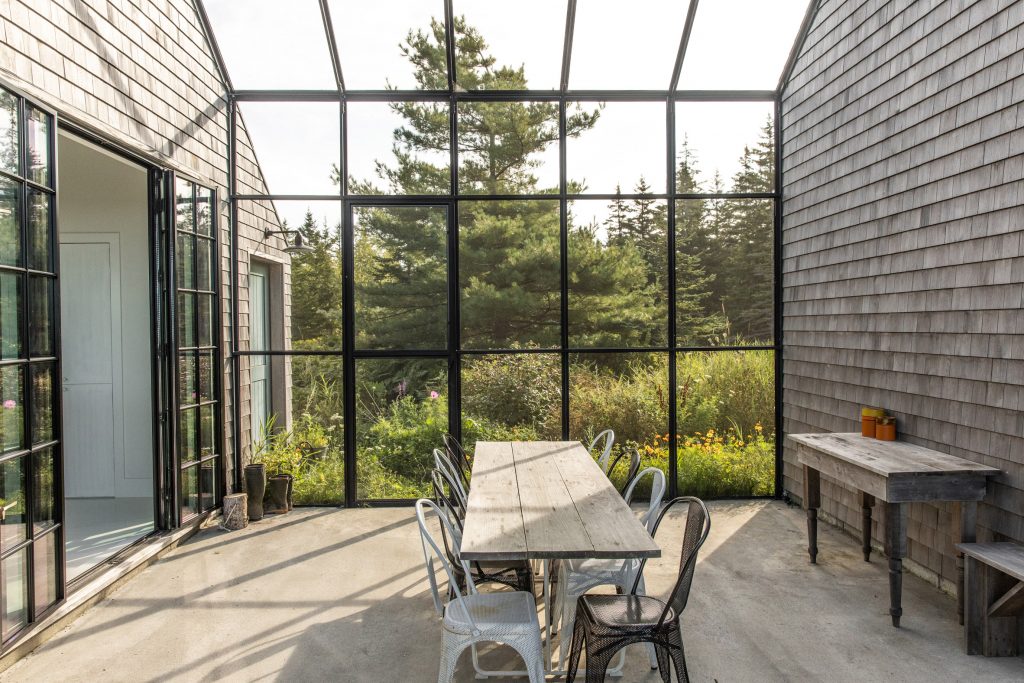

Little Peek by Berman Horn Studio
The house is rectangular in plan aside from a portion that accommodates the entry and juts out at a perpendicular angle. This is intended as a reference to the shape of nearby New England farmhouse buildings known as Ells that date back to the 1800s.
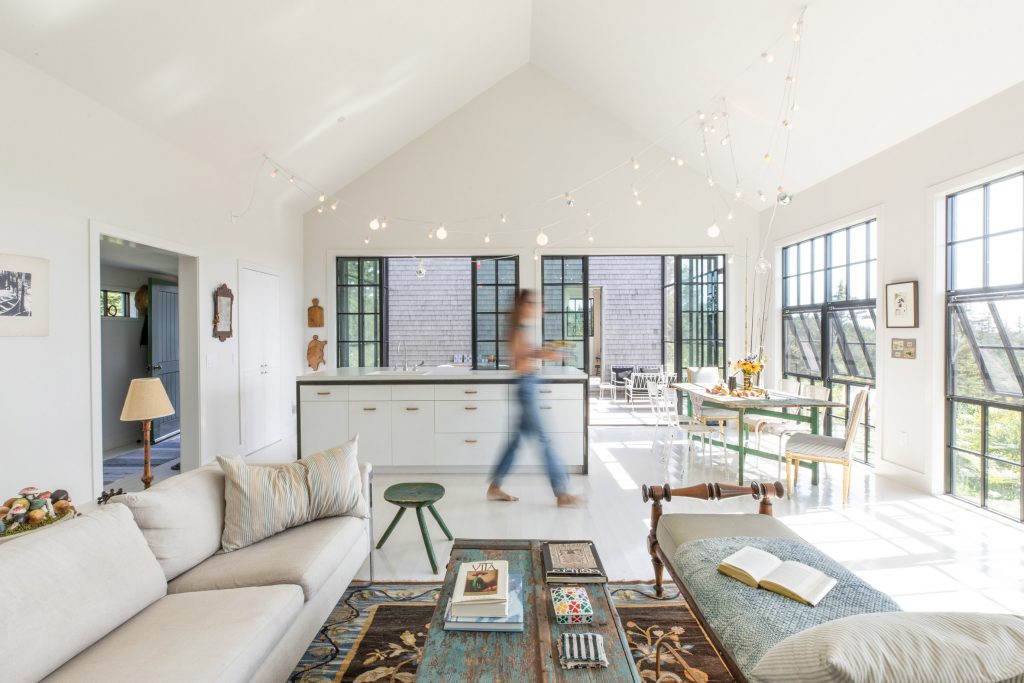
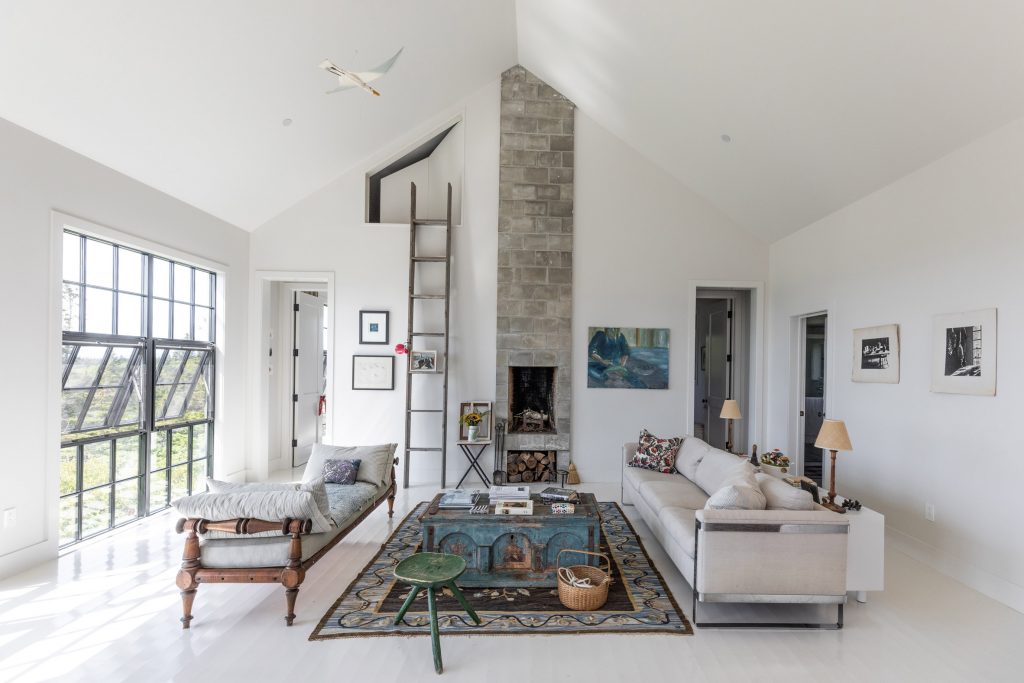
Little Peek by Berman Horn Studio
Within the interior, the decision was made to limit the visual presence of wood to bring focus onto the nature that surrounds the house and is framed in gridded windows. Therefore, the interior is dominated by the combination of whitewashed walls, cabinets and pale floors in yellow birch painted with a glossy paint, while the decor comprises an eclectic mix of pieces, including American and French antique furniture and floral textiles.